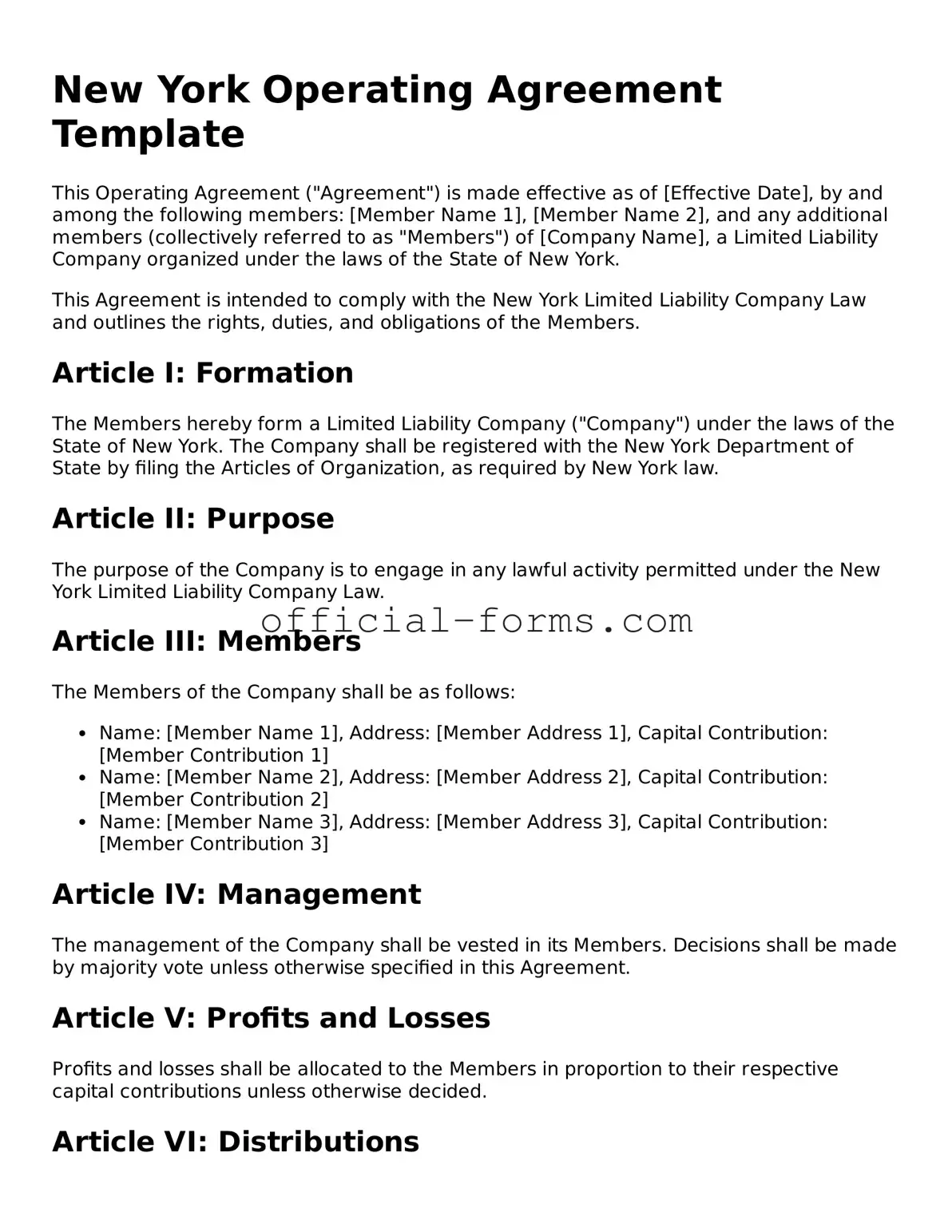Filling out the New York Operating Agreement form can be a straightforward process, but many people make common mistakes that can lead to complications down the line. One frequent error is failing to include all members of the LLC. Every member should be listed in the agreement to ensure clarity and avoid disputes later.
Another mistake is not specifying the management structure of the LLC. Whether it is member-managed or manager-managed, this detail is crucial. Omitting this information can lead to confusion about who has decision-making authority.
Some individuals neglect to outline the percentage of ownership for each member. This omission can create misunderstandings regarding profit distribution and responsibilities. Clearly stating each member's ownership interest helps to prevent conflicts.
Inaccurate or incomplete information about the LLC's purpose is also a common pitfall. The agreement should clearly define the business activities the LLC will engage in. Vague language can lead to legal issues or challenges in the future.
Another frequent error is not addressing the process for adding or removing members. The agreement should include procedures for these changes to ensure smooth transitions and maintain the integrity of the LLC.
Many people also fail to include a buy-sell agreement. This provision is essential for outlining what happens if a member wants to leave the LLC or passes away. Without this clause, the remaining members may face difficulties in managing ownership transitions.
Some individuals overlook the importance of including provisions for dispute resolution. Establishing a clear process for handling disagreements can save time and money in the long run. It is advisable to specify whether disputes will be resolved through mediation, arbitration, or litigation.
Additionally, neglecting to have the agreement reviewed by a legal professional can be a significant mistake. A lawyer can help identify potential issues and ensure that the agreement complies with New York laws.
People often forget to update the Operating Agreement after significant changes occur. Life events such as new members joining or changes in business direction should prompt a review and revision of the agreement.
Finally, failing to sign and date the agreement is a common oversight. An unsigned document may not hold up in legal situations. All members should sign the agreement to confirm their understanding and acceptance of its terms.
